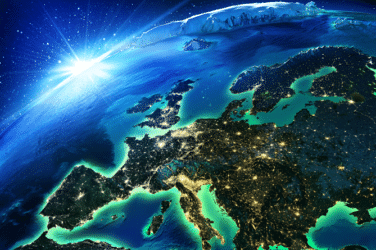
(This article first appeared in the Q4 issue of GlobalTrading.)
By Dylan Kluth, Head of Dealing EMEA & Americas, AMP Capital

Dylan Kluth, AMP Capital
2020 has been a year unlike any other, and the changes to working life have created opportunities for, and accelerated developments already underway in, the evolving O/EMS landscape. Vendors are constantly providing new innovations, better ways to trade more and more assets electronically, and innovative ways to integrate our data.
Three areas of opportunity that stand out are: integrating technology to improve the infrastructure of a multi-asset desk; the need for teams to keep pace with, and make the most of, continuous technological advances; and finally, in a year characterised by working remotely, the importance of communication. All of these opportunities require careful management, but hold great potential.
One team, many asset classes, unified system
At AMP Capital, our traders are truly multi-asset, dealing nearly all asset classes within equities, rates, credit, FX, futures and options.
In practice, the multi-asset approach of our desk means our dealers can and do trade a wide range of asset classes on most days. We transitioned to a multi-asset desk nearly seven years ago and have found it to be the most efficient and collaborative approach to dealing. This model introduces a degree of complexity, which we manage by embracing the latest technical tools that our systems provide.
Currently, a few O/EMS come close to providing a truly multi-asset tool, however there are some limitations. Traders are left balancing numerous systems at once, and often the friction of communication between systems prevents trading desks from benefiting from the full functionality of each individual system.
At AMP Capital, we have found the most success by focussing on the entire dealing infrastructure, from start to finish. Focussing on any single system can be too narrow if one system cannot communicate with the other.
Information must flow between the OMS and EMS to ensure that systems aren’t limited by the data they receive. For example, when the OMS cannot also be the EMS, data must transmit effortlessly from OMS to EMS. Once that occurs, traders can apply time stamps to orders, monitor in-flight TCA, apply auto-routing rules, manage counterparty restrictions and utilize bespoke tagging mechanisms relevant to portfolio management teams. We recognized that our systems have the potential to be greater than the sum of their parts, something we achieved through re-examining our team’s approach to IT.
Integrating IT expertise
Technology is evolving rapidly, and we firmly believe that dealing teams that are quick to adapt and adopt the latest relevant innovations – without introducing unnecessary risks – possess a competitive advantage. Ongoing monitoring and assessment of service provision is therefore a priority for our team.
It has also been our experience that the buy-side trader is constantly asked to do more and more. This ever-expanding remit is made easier with technological improvements, however the IT teams servicing these improvements are themselves often split across many teams and projects. Recognizing this, our dealing and IT teams collaborated to create the new position of Trader Technology Analyst (TTA). The TTA works closely with our team of traders to focus purely on trading. Areas of focus range from TCA to electronic trading, and from risk mitigation to order automation.
When the TTA role was introduced in February, our collaboration with IT increased significantly, allowing us to actively focus on Trader Technology and empowering our team of dealers to implement a wide range of projects and ideas. Our initial focus was on risk mitigation, however more recently we are enjoying the agility that comes with a more collaborative approach, and are able to respond rapidly to any ideas that require an IT skillset.
Learning from lockdown
Historically, dealing desks have at least partially relied on proximity to each other and to portfolio managers for regular and clear instruction and action. However, when headlines in mid-February started to suggest that COVID-19 would impact the world as it had China, AMP Capital’s dealing desk was quick to enact and enhance our business continuity plans. We’re thankful that we did, because when we went into lockdown about a month later, our team was ready.
There have been a number of key learnings from this process, especially as they relate to our systems. Reliable and effective communication has remained non-negotiable. Regular and clear delegation of our order book is critical to ensure best execution. Such processes were already well established within our team, and technology within our O/EMS has made maintaining them easier than ever before. We have found that communication is far more effective when our system for trading can also be used for communicating.
A key area for us is the use of technology to integrate with our portfolio managers. Our centralized dealing function means we interact with a long list of portfolio managers. Of course, best execution remains the critical focus of our roles, but increasingly, we find the most demonstrable areas of alpha preservation are by creatively engineering two-way conversations between dealer and portfolio manager. O/EMS technology that enhances our ability to better understand the areas of focus for our portfolios managers ensures that our team of multi-asset dealers can quickly communicate the most relevant market colour to our portfolio managers.
Finally, it has become clear that our constant analysis of the way we trade has allowed us to remain nimble and effective when volatility increases. Volatility comes and goes, but this latest bout sent a reminder: building a robust set-up when it’s business as usual matters, so that our dealing desk can remain calm, cool and collected when volatility increases.






